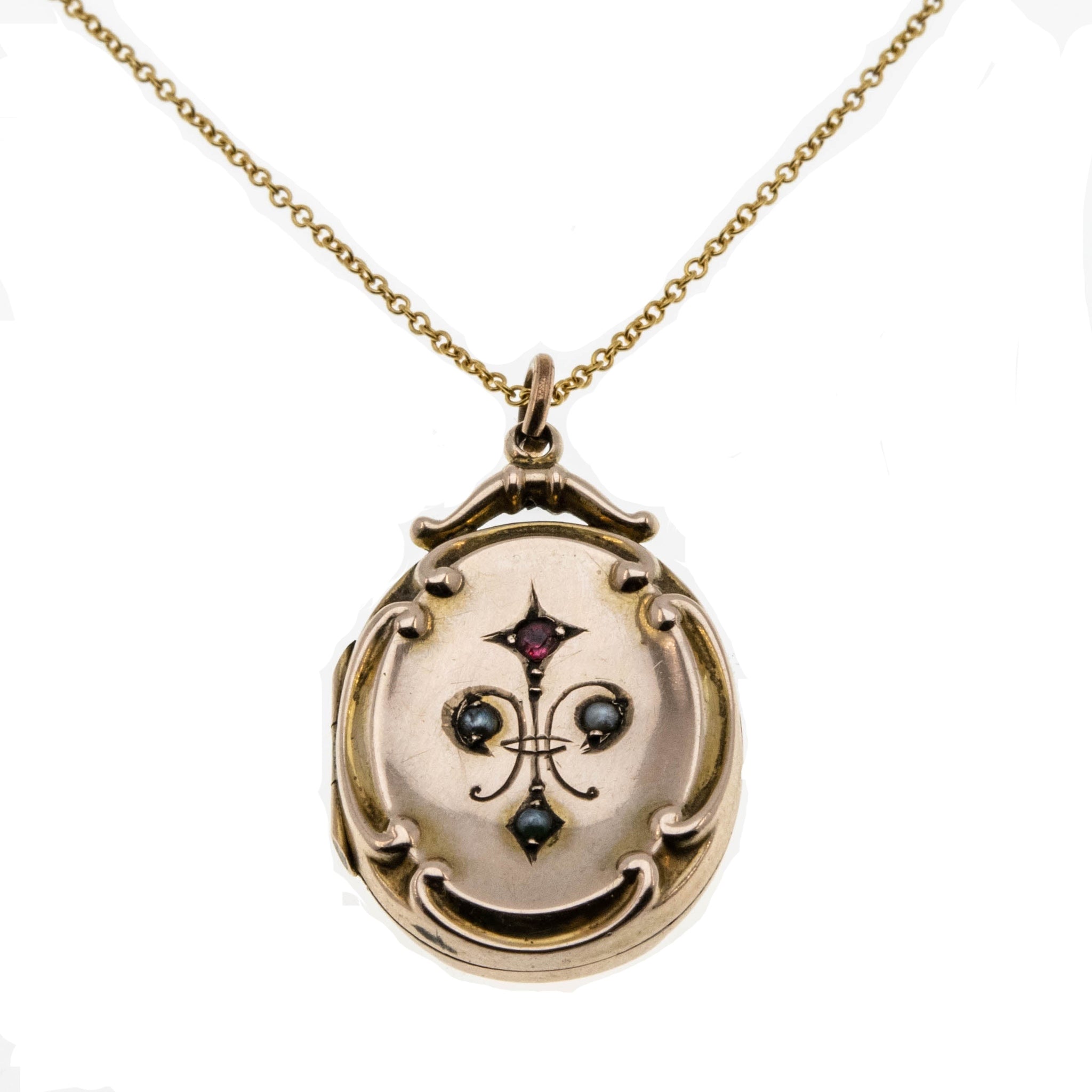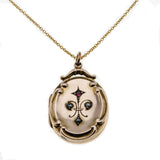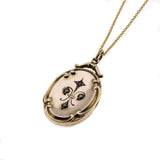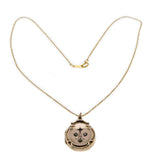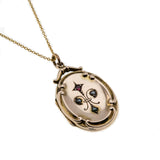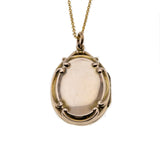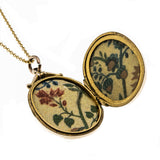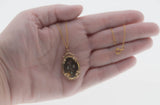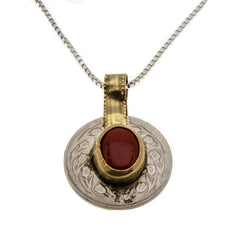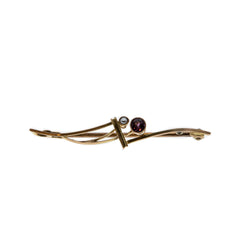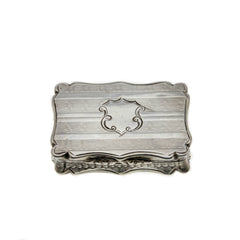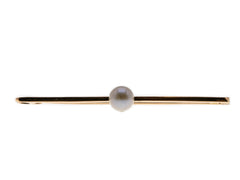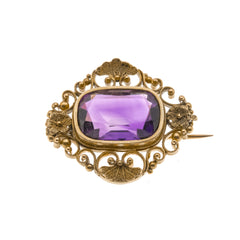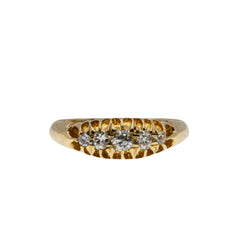Jeweled Beauty - Victorian English 9K Gold Ruby Paste & Natural Pearl Locket Pendant & Chain (VICP097)
Rarities Antique Jewelry
Jeweled Beauty - Victorian English 9K Gold Ruby Paste & Natural Pearl Locket Pendant & Chain. This lovely locket is crafted from 9K yellow and rose gold, tested. The chain is 14K gold fill, hallmarked 14K 1/20. Featuring Victorian designing, one round cut ruby paste gemstone, three natural seed pearls, Victorian styling, and quality craftsmanship. The exquisite locket is oval shaped with a pretty scrolled surmount, and round bale. The pendant exhibits lovely detailing on the border of the locket on the front and back. The gallery is crafted from rose gold, whilst the deep carved detail is made from yellow gold. Therefore the locket can be worn with a yellow gold, or rose gold chain. The gallery showcases a high polish with a satiny patina. The front is adorned by jewels, whilst the back is plain and polished. The ruby paste is red in color, and the pearls are a beautiful silvery grey color. The yellow gold chain picks up the yellow gold border on the locket, and has a spring ring clasp, which is in perfect working order. The inside of the locket has one brass frame and plastic cover with decorative floral paper in both chambers of the piece. The locket opens well and snaps closed perfectly. This Victorian era locket would make a very special gift for that special someone. Truly a piece tp be cherished for many years to come.
History: Paste jewellery is a special type of flint glass that emulates a number of gemstones. The origins of Paste jewellery date back to the mid-18thcentury, to a jeweller named Georges Frederic Stras, who worked as a jeweller to the king when he moved from Strasbourg to Paris in 1724.
Pearls were presented as gifts to Chinese royalty as early as 2300 BC, while in ancient Rome, pearl jewellery was considered the ultimate status symbol. So precious were the spherical gems that in the 1st century BC, Julius Caesar passed a law limiting the wearing of pearls only to the ruling classes.
Gold was generally used for a couple thousand years solely to create things such as jewelry and idols for worship. This was until around 1500 BC when the ancient empire of Egypt, which benefited greatly from its gold-bearing region, Nubia, made gold the first official medium of exchange for international trade.
Rose gold, also known as pink gold and red gold, was popular in Russia at the beginning of the 19th century, and was also known as Russian gold, although this term is now obsolete. Rose gold jewelry is becoming more popular in the 21st century, and is commonly used for wedding rings, bracelets, and other jewelry.
Lockets evolved from ancient amulets to mementos... growing increasingly prominent by the 19th Century. European designs date back to the 16th Century, where small pendants were worn to ward off evil spirits. One of the earliest known examples of a locket with a picture in it is Queen Elizabeth I's ring.
Chain: Gold-filled jewelry has 100x more gold alloy than gold plated and because that layer is so much thicker, it means gold-filled jewelry lasts longer and stands up to wear and tear better than gold plated. All it would take is one small scratch on a gold-plated piece to expose the jeweler's brass underneath.
In the history of the United Kingdom and the British Empire, the Victorian era was the period of Queen Victoria's reign, from 20 June 1837 until her death on 22 January 1901.
Measurements: Locket (Including the Bale) 36.00 mm x 19.00 mm Chain 18"
Stone Size: Ruby Paste Gemstone 1.50 mm Pearls 1.50 mm each
Weight: 5.10 grams
Condition: Excellent
Origin: England
Date: Circa 1880

